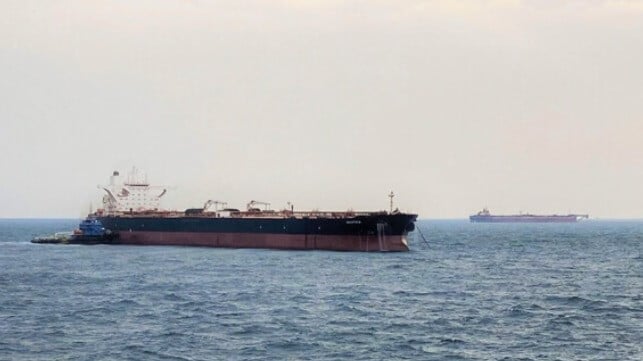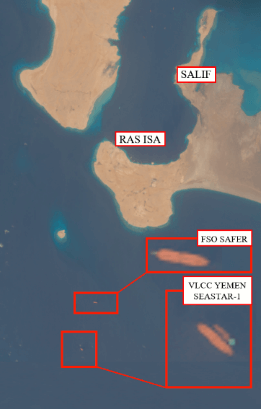Houthis Purloin Crude Oil From UN-Funded Floating Storage Tanker

In a story broken by Lloyds List and Yemeni journalists, evidence has emerged that the Houthi administration in Yemen is siphoning off crude oil from an oil storage facility maintained by the United Nations off Ras Isa. The story comes as no surprise to observers of Yemen, who have long admired the Houthi’s capacity to leverage UN-funded aid programs to their own economic and political advantage.
The oil that the Houthis have purloined came originally from Yemen’s Marib oilfield, and had been stored in the FSO Safer (IMO 7376472), a floating oil storage facility moored off Ras Isa. This infrastructure fell into disuse when the Houthis captured the coastal area around Ras Isa and Hodeidah in 2015, and the Safer Exploration and Production Operations Company (SEPOC) stopped pumping their Marib crude, as they could no longer sell it.
At this point, the FSO Safer was left holding 1.14 million barrels of oil, today worth nearly $80 million. Holding the oil but unable to sell it, the Houthis also prevented maintenance of the FSO Safer, whose cargo became progressively more volatile as the condition of the ship deteriorated, threatening an explosion and an environmental catastrophe.
In 2022, the Houthis finally agreed to a deal with the UN, whereby the oil aboard the Safer was transferred to VLCC Yemen (IMO 9323948), a tanker that was acquired for the specific purpose. There was no further agreement to proceed either with the removal and salvage of the FSO Safer, or with the disposal of the crude oil now transferred to the Yemen, whose ownership was disputed between by the Houthis and SEPOC. Thus for the last two years, FSO Safer has remained in position, with VLCC Yemen moored close by and still fully loaded. In the meantime, ownership of the Yemen has been transferred gratis to SEPOC, although the UN has also continued to pay directly for the maintenance crew on board the ship.
Since the recent Israeli attacks on the docks and oil facilities at Hodeidah, Ras Isa and Salim, the oil on board the VLCC Yemen has acquired a scarcity value. Even though modern refining facilities and transshipment facilities have been destroyed, locals still have the capacity to "cook" crude oil into poorly distilled products, for which - despite the poor quality - there is a hungry local market.
 Left: Safer, Yemen and Seastar-1 off Ras Isa, June 8 (Sentinel-2/CJRC)
Left: Safer, Yemen and Seastar-1 off Ras Isa, June 8 (Sentinel-2/CJRC)
Hence on June 8, the coastal tanker Seastar-1 (IMO 9163283) was seen alongside the Yemen, transferring oil, and was later seen offloading in Ras Isa. Lloyd’s List reported that prior to June 8, Yemen had also taken on board ship-to-ship transfers of Russian petroleum products.
The UN has lodged a protest over the oil transfers, which must have been made with the aid of the Yemen’s UN-sponsored but presumably press-ganged crew. It would also be feasible for crude oil to be barged the short distance into Ras Isa using lighters. Given that the VLCC Yemen now has a UN-paid crew, and the vessel itself is owned by the Yemeni government’s SEPOC, it may be difficult to curb future siphoning of crude that is much needed by the Houthis.
